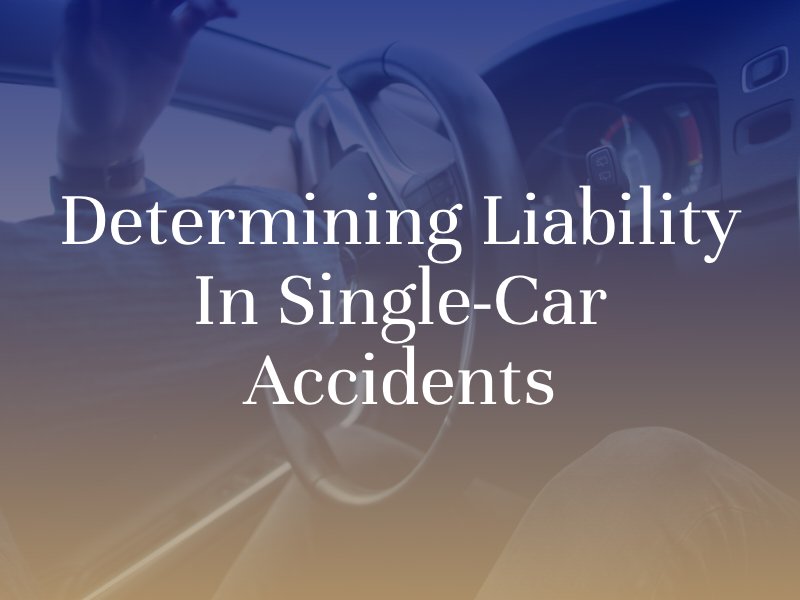
Who Is Liable in a Single-Vehicle Accident?
Colburn Law
Posted in Car Accidents,Pedestrian Safety on September 18, 2022
When we hear about car accidents, we often assume that they involve at least two vehicles. However, not all collisions involve another driver. If you are injured in a single-car accident, you may wonder what to do next.
Washington law requires that any motorist who causes an accident is liable for the damages of their victims. In a single car accident, identifying the liable party can be a challenge. In these situations, it is important to consult with a Washington car accident lawyer to discuss your next steps.
Common Causes of Single-Vehicle Accidents
A single-vehicle accident is a car crash that involves only one motorist. Like accidents involving two or more vehicles, there is always an underlying cause for a single-vehicle collision.
There are many scenarios that can lead to this type of collision, such as the following:
- A road hazard, pedestrian, vehicle, or another object suddenly appears in the road, causing a driver to swerve and get into an accident.
- A driver hits an object on the road or on the side of the road, such as a guardrail or a fallen tree.
- A driver suddenly loses control of his or her vehicle due to a medical emergency, drowsy driving, or another factor.
- Weather conditions and low visibility can cause a driver to lose control of his or her vehicle and get into an accident.
Determining Liability in Single-Car Accidents

Identifying the cause of a single-car accident is critical to understanding who is liable. Washington is a fault accident state, which means that any person or entity that causes a collision is financially responsible for any damages.
In many cases, the driver is the liable party in a single-car accident. For example, if a driver falls asleep behind the wheel, he or she caused the accident and is therefore liable if any pedestrians or passersby are injured.
However, there are situations where someone else could be responsible. For example, if a pedestrian is jaywalking and causes a driver to swerve and get into an accident, that pedestrian could be at fault. If a driver swerves to avoid another dangerous driver, the other motorist would be at fault even if no direct collision had occurred.
If a road hazard causes the accident, liability will be placed on the government entity that was responsible for keeping the road safe. In some cases, a mechanical defect causes a single-vehicle accident. In this situation, you could file a lawsuit against the manufacturer who produced the defective product.
How to Prove a Single-Vehicle Accident Claim
To prove a single-vehicle accident claim, it is necessary to pinpoint the cause. In these situations, it is important to enlist the support of a Washington car accident lawyer. An attorney can investigate the collision and help you identify who is responsible. Then, your lawyer can help you gather evidence to establish the at-fault party’s liability and secure fair compensation for your case.
There are four facts that you will need to prove in order to recover a settlement:
- The at-fault party owed you a duty of care.
- The at-fault party breached the duty of care.
- The at-fault party’s breach of duty caused your accident.
- You suffered damages that you can collect in your lawsuit.
After a single-vehicle accident, your attorney can launch a complete investigation into your collision and help you recover the compensation that you deserve. Contact a Washington car accident lawyer soon as possible to discuss your next steps and initiate your claim.



